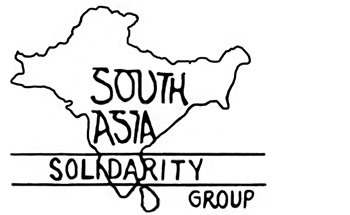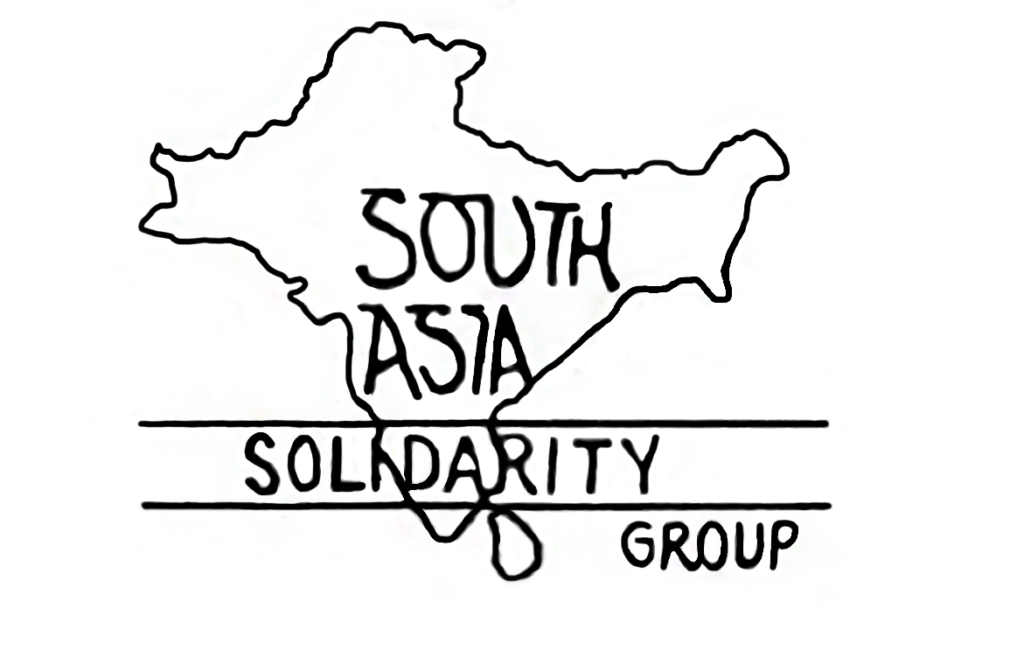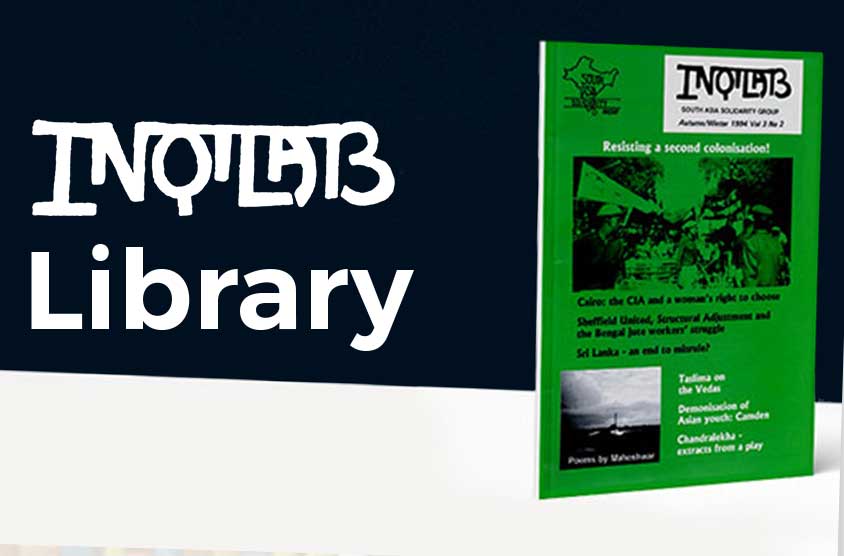- August 12, 2018
- Posted by: admin
- Category: News
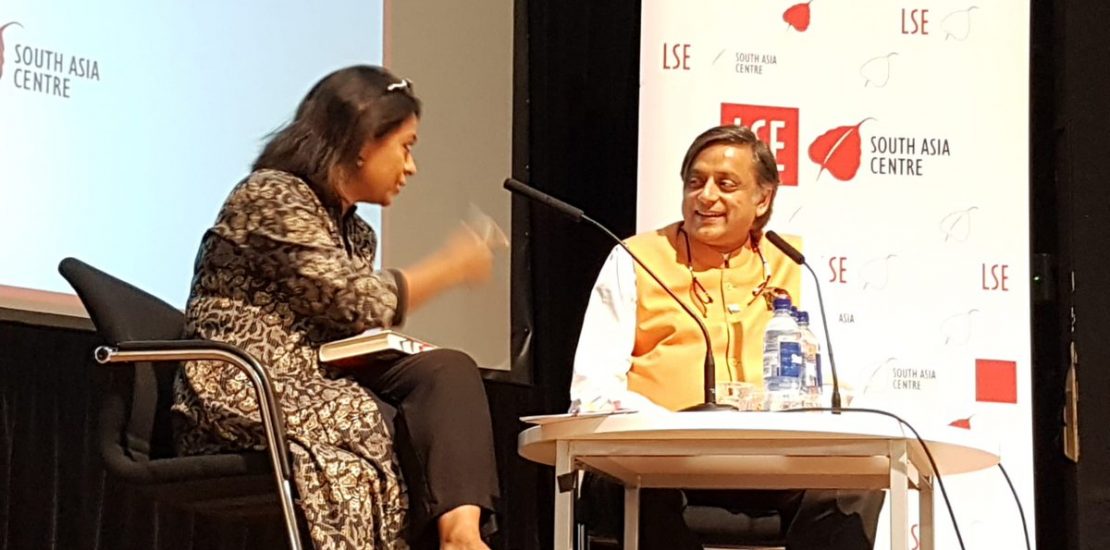
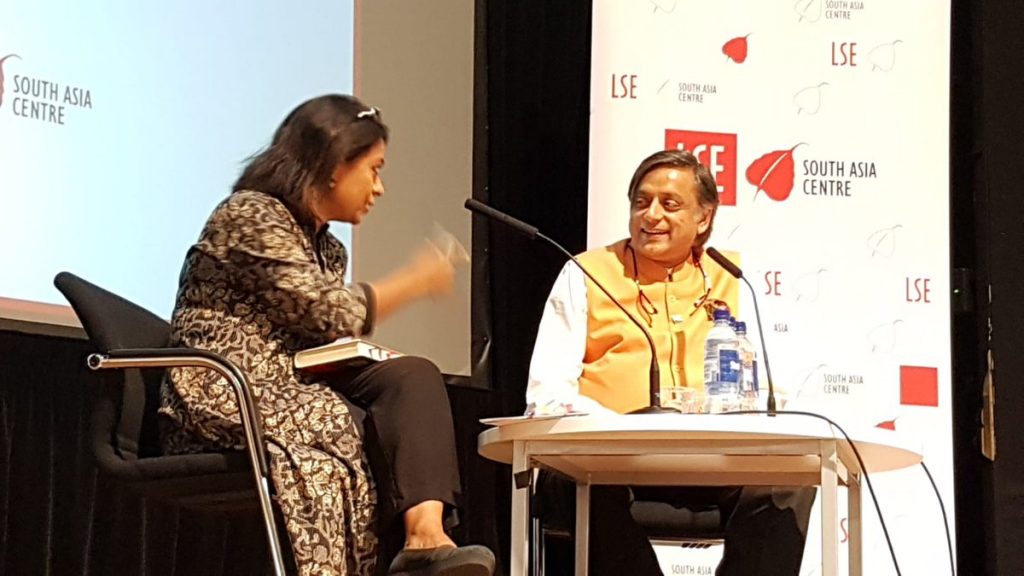
The vandalisation of Shashi Tharoor’s office, on 16th July, after he said that the BJP, if voted back to power, would turn India into a Hindu Pakistan; the murderous attack the next day on the well-known social activist and Arya Samaj leader Swami Agnivesh for speaking out about the mob-lynching of Muslims, make it clear that, from now on, even so-called upper-caste Hindus can be attacked by the BJP’s storm troopers, if they speak out about communal violence. Against this background, Shashi Tharoor’s latest book – Why I am a Hindu and his recent talk at the LSE raise some disturbing questions about Congress strategy. Ujjaini Chatterji reports:
In the most glamorous city of India, there exists a silent, dark world. And in its darkness, reside those people, whose lives are the shadow behind the glitter of the largest city of India-Mumbai. In our narrative of economic explosion and colourful affluence, the rat catchers of the night are usually absent. Yet, they appear every night with torches to look through the darkness and search for rats. They are bound by targets to kill a certain number of rats and to present their carcass for wages (1). The degrading circumstances and dehumanizing conditions of the job are seldom themes in the political dialects of Indian politicians. The conditions of these inhumanly treated workers are not election-winning points. And hence, any discussion about the rat catchers of Mumbai was the last thing I expected from the talk by Dr Shashi Tharoor at the London School of Economics (LSE) last month. All I intended to do was to ask a very direct and as it appears to me now, an over simplistic question.
Dr Shashi Tharoor’s talk was about his recent book- titled Why I am a Hindu. Interestingly enough, the book seemed to be very carefully titled. It was not about why Dr Tharoor was an Indian. The book is about Tharoor’s Hindu identity and how, his understanding of Hinduism is far more enriching and acceptable than that of India’s ruling Bharatiya Janta Party(BJP) and the Rashtriya Swayam Sevak Sangh (RSS). Therefore, rather predictably, the conversation began with the impact this book seeks to have on the 2019 general elections in India, leading one to wonder whether religion is going to be the only ground on which the 2019 general elections in India would be contested? Was the Indian National Congress using the book then, to outline their campaign for the election? At a time when the BJP is ruthlessly using communal and casteist violence as a campaigning tool – the answer to these questions from a prominent MP of the largest, single opposition party of India, is extremely important.
Dr Tharoor began by declaring that before he moved on to discuss the most pressing issues in society, it was necessary to challenge and expose the BJP’s lack of clarity on Hinduism. He moved on to talk about Dharma and the depth of Hindu philosophy and that it was not restricted to just the Vedas. Unlike all other religions, Hinduism, according to Dr Tharoor, was not confined to allegiance to a single divine authority. The religion and its various schools, had made space for atheists, sceptics and all other thinkers. Naturally, therefore, it appeared that Tharoor had already painted every Indian as a Hindu of sorts. According to him, Indians were tolerant and secular because they were Hindus. His speech portrayed Indian Secularism as Hindu secularism. So now, in India, secularism too, had a religion. And this assertion was far more problematic than the question.
My intended question for Dr Tharoor (which I had prepared before the talk) was whether the Congress was distracted (as is intended by the BJP) into discussing religion (Hinduism) over other issues of greater significance in India? A book on Hinduism however spiritual, does little to address the lives of the rat catchers of Mumbai or the problem of manual scavenging by Dalits in India. Dr Tharoor, however had already answered my question. He was unapologetic in the assertion of his Hindu identity and his pride in being born a Hindu. He pointed out that everyone had a dharma (duty) to fulfil, as an accountant, student or a rat catcher! Contrary to my expectations, Dr Tharoor had not ignored the existence of the profession of rat catchers. He recognised them and obligated them to be a part of a profession. The exploitative and dehumanising nature of their work was normalised by his perception of their dharma (duty).
Most of Dr Tharoor’s speech seemed to rotate round the greatness of Hinduism and how the culture and identity of India are intertwined with it. Tharoor said that Hinduism was great because it accepted Muslims and Christians in it – implying therefore that neither Islam, nor Christianity or any other religion was inherently Indian by identity and that they had not contributed to shaping Indian identity. By now, Hinduism was not just an element amongst many others, within the story of India, but a word that Dr Tharoor used interchangeably with the word ‘Indian’.
Dr Tharoor did not refute the version of Indian History, propagated by the BJP and RSS, in which Muslim rulers plundered Hindu culture and identity, instead he chose the very shallow argument that Indians should forgive (but not forget) the past and move on towards a better future. This constant tendency of Dr Tharoor to avoid confronting misleading narratives about history, was depressing. In a way, he seemed to endorse them! He repeatedly referred to the principles of Swami Vivekananda who also asserted that Hinduism was the greatest of all religions which has survived despite a thousand years of slavery and degradation (2). And this inclination towards, what Professor Amartya Sen terms, miniaturization of India is very disturbing (3).
Professor Sen, in his book The Argumentative Indian (2005), had examined the basis of Hindutva ideology quoting Rabindranath Tagore, about these systematic distortions of Indian history (4)! :
“The history of India that we read in schools and memorize to pass examinations is the account of a horrible dream-a nightmare through which India has passed. It tells of unknown people from no one knows where, entering India; bloody wars breaking out; father killing son and brother killing brother to snatch at the throne; one set of marauders passing away with another coming in to take its place; Pathan and Mughal, Portuguese, French and French –all helping to add nightmarish confusion.”
Professor Sen, had explored the depth of the relationship of Islam with India how, for example, Dara Shukoh, brother of Mughal ruler, Aurangzeb had translated the Hindu texts and compared them favourably with the texts in Islam (5).
While, Professor Sen’s, approach demanded an understanding of the assimilation and heterogeneity which have been central to Indian identity throughout History, Dr Tharoor brought it down to a shallow argument about the greatness and infallibility of Hinduism. According to his speech, a good Muslim would also notice the greatness of Hinduism and accept it because, clearly, Hinduism was better as it imposed nothing. This concept is particularly challenging as it seizes every school of thought and every identity and places it under the banner of Hinduism. Ironically, Dr Tharoor’s speech was an exact echo of what Malavika Avinash (and several other BJP leaders), said about secularism at the India Today Karnataka Panchayat, 2018 (6). While Avinash imposed her narrative in a tone of aggressive fanaticism aiming to prove how secular the religion is, Dr Tharoor was calm and eloquent in doing just the same.
When questioned about his choice of a saffron jacket for the evening (Which I had initially thought was a mere fashion choice), Dr Tharoor declared with confidence that it was indeed a symbol of his Hindu identity just as saffron was a colour from the Indian National Flag (as if the only colour.)
Unfortunately, Tharoor’s description of secularism in India, involved none of the the non-Hindu components which have shaped India. His narrative contained the Vedas and the Bhakti movement but there was no Din E Ilahi, Sufi or Baoul culture. The historical intercourse of cultures and stories have not just accommodated several identities from across the world in India but have also preserved their inherent distinctiveness. Therefore, the statement that the Indian identity has survived despite the interferences of other cultures in India is in itself flawed. In fact, it is the accumulation of many different representations that contributed to the formation of the Indian identity. Akbar is no less a maker of the Indian identity than the Vedas. While Akbar was one of the earliest kings to have outlawed Sati and encouraged widow remarriage (7), Raja Ram Mohan Roy was educated in a Madrasa (8). Even today, it is incomplete to offer prayers in the Ayyappa temple of Kerala without visting the Islamic Shrine near the temple. According to mythology, Ayyappa’s close friend was Muslim and no prayer is complete without a visit to the Islamic Shrine. Yet, no records tell us much of the religious exchange of these two friends (9). And if, after all, we need to delve into looting or plundering of cultures, then should we not go back to the Dravidians and Aryans and their relationship and history? Then where does the Indian identity stand at all? Is it false to say that so many diversities exist within Indian identity because it is such an ancient culture? If Hinduism chose to be so unaltered by history, it would not have such an ancient root in the first place. However, none of these issues seemed to concern Dr Tharoor, and the discussion became increasingly unfounded and pointless.
Dr Tharoor showed an enormous amount of caution as he tried to answer another question from the audience. The question was specifically premised on the point that in order to appease the Muslim community, the Congress has historically treated Hindus as ‘second class citizens’. Apparently, this neglect of the Hindu community has led to the present form of Hindutva assertion.
Tharoor’s approach to the question was abstract and inconclusive. even though he touched upon the socio economic deprivations of the Muslim community in India, he left the point unclarified. he hinted vaguely, towards the findings of the Sachar Committee report and the need to include Muslims within mainstream Indian activities and institutions like in the army. However, he steered the perspective to a shockingly Islamophobic and inappropriate position – saying that it was important to have more Muslims within the system, especially post 2002 Gujarat riots, in order to prevent them from becoming potential Islamic jihadists!
Even though Tharoor’s words hinted upon some very pertinent issues, he crafted them carefully to keep the ground for Hindu interests intact. There was little mention of the sustained persecution of minorities in India, like the rape of Christian nuns in Orissa in 2008, where the alleged rapists screamed “Bharat Mata Ki Jai”(Hail Mother India!) (10). This idea of Hindus being the primary citizens of India and all others (particularly Muslims) being second grade people, went broadly, unchallenged.
This conversation could have been a useful forum to regain credibility for the Congress party and establish its commitment to secularism – but it was not to be. The neglect of Hindus is a tool, commonly used by the Hindu supremacists against the Congress Party. But were the Hindus really neglected and their identities diminished in their own nation? The question contains within itself, two important parts. Firstly, who are these neglected Hindus? And secondly which Hindu interests are being talked about here? (Are these the issues which the BJP government is credited with addressing?).
In 2005, Prime Minister Dr Manmohan Singh, commissioned the Sachar Committee report, to investigate the socio-economic and educational status of Muslims. The report revealed that the Muslim community was very poorly represented occupying about 2.5% of bureaucratic positions, even though they formed about 12% of the population (11). Their representation in the Indian Army was abysmally low. According to the program titled ‘Minority Report’ of the CNN-IBN, hardly 3% of Indian Soldiers were Muslims (12). In the decade after the 2002 genocidal attacks on Muslims in Gujarat, there was a significant threat to the minority communities in India – over 2500 people were killed in communal disturbances in India (13). The 2012 International Religious Freedom report, detailed the concerns that the minority communities in India faced in practicing their faith (14). In 2017 alone, some 111 people were killed and 2384 others were injured in 822 communal incidents (15). Under these circumstances, there was an urgent need for the Communal Violence Bill. Yet, the very debate around the same died a premature death.
Dalits and indigenous tribal communities faced similar difficulties. The Backward Classes Commission, in the year 2007, said that 37.17 percent of the Indian bureaucracy was made up of Brahmins, most of whom, occupied top posts (16). In 2006, the survey by the CSDS found that out of the decision makers in the Indian media, only 4 percent belonged to ‘lower castes’ and 3 percent were Muslims. While over 53 per cent of the prisoners in Indian jails are either Muslims, Adivasis or Dalits (17), the 100 richest Indians control about one fourth of the GDP of India. As of 2007, more than 800 million people lived on less than rupees 20 a day. Presently, India is the country with the maximum number of people below the poverty line (18). The Food Security Bill also lost context since its enactment as the BJP is more concerned about the regulation of diet than ensuring the availability of food to the nation.
In 2013, the Food Security Bill was hurriedly enacted by the Parliament. The background and intention of this legislation was to address the growing concerns of scholars like Amartya Sen and Jean Dreze, about the failure of India to translate its growing GDP into a decent Human Development Index. In 2014, India was ranked 55th in the Global Hunger Index. Under the circumstances, the Bill was only a foundation from which future policy making and further planning to tackle poverty could be pursued. Between the years 2006 and 2013, nearly 50% of the tribal children in India suffered from malnutrition (19). Even though, the Supreme Court has accepted the Right to Food as a fundamental Right under Article 21 of the Indian Constitution, food distribution in India remains tremendously misguided (20). Therefore, issues like transparency and improvement of the public distribution system and the clear identification of target groups required much more attention from the central government. Yet, the BJP government did little to carry forward that conversation to improve, what they had previously called a half-baked bill (21). Under the Modi government, India has slipped to the 100th position in the global hunger index. According to the statistics presented by the government, 45.3 tribal Indians and 31.5 Dalits in India continue to live below poverty line (22). Earlier, the country was behind Nepal and Bangladesh. Now, war- torn nations like Iraq and North Korea are ahead of India in providing food to their citizens (23).
Thus, while speaking of the BJP and its ability to address Hindu rights, one must ask whether it does indeed cater for the needs of Hindus in the context of social justice and equity or are its policies on the ground merely a populist jeer towards bigotry and chauvinism in the name of Hindutva.
Dr Tharoor, certainly knows and understands these issues far better than I do. Yet, he clearly chose to keep the conversation away them avoiding touching in any depth on these points. Perhaps, he also understands the nexus between the Congress and their soft core Hindutva politics that has, in fact, helped in creating this present, full blown Hindutva menace.
In an article titled “Tweedledee Tweedledum”, French scholars, Christophe Jaffrelot and Gilles Verniers, traced the historic position of the Congress and the way it constantly tries to accommodate itself within the Hindutva frame (24). Despite the very secular disguise of the Congress, it has maintained a calculated distance from Muslim issues. For instance, in 2011, when, for the first time, the police shot dead 10 Muslim men inside a mosque in Gopalgargh (about an hour from Delhi, by car), neither Rahul Gandhi or the then Home Minister P. Chidambaram chose to visit the site.
The Congress party has hardly nominated any Muslim candidates from Gujarat. In fact, the Congress has not even challenged the Savarna arguments against reservation and Dalit rights, primarily propagated by the Hindutva politics of the BJP. Instead, rather shamefully, they published ads in 2007, that featured ‘terrorists’ with covered faces to highlight what they claimed was the softness of the Vajpayee government towards islamists. Similarly, the 1984 election win of Rajiv Gandhi was hailed by self- proclaimed secularists like Sitaram Kesari as a majoritarian win over a minority uprising. There was no hesitation in the Congress to Brahminize Rajiv Gandhi for winning elections either (25). It is therefore no surprise, when Rahul Gandhi tries to counter the BJP with his temple visits and a faithful re-assertion of Brahmanism. Congress plays its cards by claiming that they are better Hindus than the BJP. However, the point still is, that this is all, still, about being Hindus (26).
Questions about their paying any attention to minorities, particularly, Muslims and Dalits, have always made the Congress uncomfortable. And this has compelled the party to keep their affiliations fluctuating from being secular and favouring social justice to being ‘morally perfect’ Savarnas.
Surekha Bhotmage and her family was brutally lynched under Congress rule and even then the mainstream media, chose to remain silent (27). The Congress government, showed no discomfort even when a Police Superintendent accused of custodial rape and brutal sexual torture was given a gallantry award on the Republic Day in 2012 (28). Dalit, Muslim and Adivasi rights were never of much significance in India. Modi only nurtured these seeds of hatred.
Tharoor’s, constant assertion that Hinduism is synonymous to secularism, vitiated the very understanding and meaning of Indian Secularism. Unsurprisingly, he devoted a substantial amount of time elaborating upon Rahul Gandhi’s deep theological knowledge about Hinduism and Buddhism (not Islam or Christianity). He confessed that he had not read much of the debate between Mahatma Gandhi and Dr Ambedkar on Annihilation of caste. Yet, Dr Tharoor was swift in his remark that Dr Ambedkar was rather eccentric in some of his opinions, while Marx understood nothing of Caste, and Indian Marxists know nothing of Marxism! ( To hear this part of the conversation listen to the LSE podcast at 30:29 mins for Ambedkar and 36:32 mins for Indian Marxists)
It is clear that the Congress’s record – its anti-Muslim communalism, for example, its casteism and perhaps most strikingly its pogrom against Sikhs in 1984 – had acclimatised the electorate for the BJP’s more systematic anti-minority politics which emerged in the early 1990s.
Since that time the Hindu supremacy of the BJP and its storm troopers has taken on monstrous proportions and mutated into open fascism. Admirers of Hitler and Mussolini, like Savarkar and Deendayal Upadhyay being officially venerated and mob-lynching of Muslims becoming commonplace, with the killers being congratulated and celebrated by government ministers.
This is why if I had to vote in India, I would still choose the Congress. To me, even a sheep is a better choice than a butcher.
What is deeply worrying at this time is that all the trappings of a Hindu state are being put in place. The President, the governors of most states, and many senior judges are all supporters of the Modi regime. As for the media there is no longer, a need to silence the media (as Indira Gandhi once tried to do). The BJP has, cleverly, purchased the media (29). In an unprecedented move, the senior-most judges of the Supreme Court expressed their fears in public about a depleting Indian democracy (30). The least one could expect from an opposition party would be to take a vigorous stand against these developments and against the rising violence against minorities.
The Indian independence movement was not just a collective resistance against a colonial power. It was, instead an uprising of diverse people from pluralist backgrounds, imaginations and ideologies, who united, to collectively question the basis of the Indian society. The movement had done as much to question the principles within our societal fabric that shaped our identity as to challenge colonialism. The debates between Ambedkar, Gandhi, Tagore and so many other thinkers of the time continue to stay relevant in our daily discourse. While Gandhi created the controversy around manual scavengers by building a romantic idealism around them, Dr Ambedkar strongly opposed this kind of dual standard and hypocrisy that fuelled the dehumanisation of the Dalits, historically in India (31).
These debates resonate within society even today, as Dalits march in protest (as in Una) against manual scavenging and cleaning of the carcasses of dead animals (32). And this very dissent and debate is the foundation of the Indian identity. India is perhaps more accurately defined by collective resistance and scepticism than by hatred, blind affirmations and fanaticism.
Rat Catchers or their children do not attend the London School of Economics. Hence, Dr Tharoor’s emphatic praise for the Dharma of rat catchers went unquestioned. However, amidst a population of one billion, living in the most dehumanising conditions with meagre sanitation and healthcare, without job security or standard minimum wages, the rat catchers, rat eaters, manual scavengers, beggars, debt ridden farmers have been seeking answers over 70 years. In a country, where human beings still die of hunger, would a religious text or discourse around it provide us, even a single meal? If Hinduism was an infinite spiritual journey and our politicians were so occupied in that context, when would we face these questions? Are Indian politicians, deliberately looking away from the people?
These questions were not discussed in Tharoor’s talk. Sadly, Dr Tharoor had answered my question through his speech. No, the Congress was not distracted by religion. They were, if Tharoor’s talk is anything to go by, ready to participate in systematic distraction using religion, and ready to use the saffron alphabet within their political grammar.
Dr Tharoor ended his talk with a rehearsed question. A 7-year-old child asked, what was Moksha (salvation)?. Like the child, I also understood nothing of what Dr Tharoor explained about Moksha. However, the saffron face (and jacket) of the tendencies of the single largest opposition party of India, seemed not just unfortunate, but extremely frightening.
1 “As India Rises, Its Rat Catchers Toil in Darkness.” Fox News, FOX News Network, www.foxnews.com/world/2010/11/20/india-rises-rat-catchers-toil-darkness.html.
2 “Reply to the Maharaja of Khetri.” On Dr Paul Deussen, www.ramakrishnavivekananda.info/vivekananda/volume_4/writings_prose/reply_to_the_maharaja_of_khetri.htm.
3 Amartya Sen , The Argumentative Indian ( Penguin 2005) 70
4 Amartya Sen , The Argumentative Indian ( Penguin 2005) 59
5 Amartya Sen , The Argumentative Indian ( Penguin 2005) 63
6 “I Am A Hindu, I Am Secular By Nature : BJP Leader, Malavika Avinash At Karnataka Panchayat.” YouTube, YouTube, 3 Apr. 2018, www.youtube.com/watch?v=NxwOeBHHgWU.
7 Abpl. “Abolition of the Custom of Sati in India.” Asian Voice, www.asian-voice.com/Opinion/Columnists/Abolition-of-the-Custom-of-Sati-in-India.
8 “Life History Of Raja Ram Mohan Roy.” Agra India – History, Architecture, Facts, Myths, Visit Timing & Entry Fee, www.culturalindia.net/reformers/raja-ram-mohan-roy.html.
9 ‘Sabarimala’ Sabarimala-Pilgrimage < http://www.sabarimala.org/the-history.htm>
10 TNN. “38 Days Later, Orissa Govt Admits Nun’s Rape – Times of India.” The Times of India, India, 3 Oct. 2008, timesofindia.indiatimes.com/india/38-days-later-Orissa-govt-admits-nuns-rape/articleshow/3556112.cms.
11Sachar Committee Report,Socio Economic and Educational Status of the Muslim Community in India, A Report, Published : November 2006 http://mhrd.gov.in/sites/upload_files/mhrd/files/sachar_comm.pdf
12 “Indian Army’s Muslim Headcount: It Is 3% or Just 29,000 Muslims but a Glorious Tradition of Service and Sacrifice.” An Indian Muslim’s Blog: News and Views about Indian Muslims, www.anindianmuslim.com/2006/03/indian-armys-muslim-headcount-3-or.html.
13 Pti. “More than 2,500 People Killed in Riots in Last Decade.” @Businessline, Business Line, 13 Mar. 2018, www.thehindubusinessline.com/news/more-than-2500-people-killed-in-riots-in-last-decade/article20663893.ece1.
14 State.gov. (2018). [online] Available at: https://www.state.gov/documents/organization/208640.pdf
15 Pti. “111 Killed in 822 Communal Incidents in 2017: Govt.” The Hindu, The Hindu, 6 Feb. 2018, www.thehindu.com/news/national/111-killed-in-822-communal-incidents-in-2017-govt/article22670770.ece.
16 Roy, Arundhati. “The Doctor And The Saint.” Https://Www.outlookindia.com/, Outlookindia.com, 9 Mar. 2014, www.outlookindia.com/magazine/story/the-doctor-and-the-saint/289693.
17 Hussain, Tawqeer. “53% Of Indian Prisoners Are Muslims, Dalits and Adivasis.” The Citizen, 9 July 2018, www.thecitizen.in/index.php/en/newsdetail/index/1/1467/53-of-indian-prisoners-are-muslims-dalits-and-adivasis.
18 Pti. “India Has Highest Number of People Living below Poverty Line: World Bank.” How Nike’s Marketing Strategies Helped It Become a Global Brand, Business Today, 3 Oct. 2016, www.businesstoday.in/current/economy-politics/india-has-highest-number-of-people-living-below-poverty-line-world-bank/story/238085.html.
19 “Tribal Malnutrition: India’s Hidden Epidemic.” Https://Www.hindustantimes.com/, Hindustan Times, 21 Dec. 2014, www.hindustantimes.com/ht-view/tribal-malnutrition-india-s-hidden-epidemic/story-egaq7hwX6Cu2Kqqr1u3PIJ.html.
20 “Death By Starvation, Right To Food & Indian Democracy.” Live Law, 23 Oct. 2017, www.livelaw.in/death-starvation-right-to-food-indian-democracy/.
21 “Dividing Population Is Impractial & Unnecessary: Jean Dreze on Food Bill.” Firstpost, Firstpost, 20 Dec. 2014, www.firstpost.com/economy/dividing-population-is-impractial-unnecessary-jean-dreze-on-food-bill-163921.html.
22 Rajesh, Kumar. “In The Upcoming Budget, The Government Must Make Amends For Chronic Malnutrition In SC And ST Children.” HuffPost India, HuffPost India, 29 Jan. 2018, www.huffingtonpost.in/kumar-rajesh/in-the-upcoming-budget-the-government-must-make-amends-for-chronic-malnutrition-in-sc-and-st-children_a_23342563/?guccounter=1&guce_referrer_us=aHR0cHM6Ly93d3cuZ29vZ2xlLmNvLnVrLw&guce_referrer_cs=Hwp4Kku8C6vK1nU1MUd3JQ.
23 Bera, Sayantan. “India’s Hunger Problem Is Worse than North Korea’s: Global Hunger Index Report.” Https://Www.livemint.com/, Livemint, 12 Oct. 2017, www.livemint.com/Politics/JS3kPSIqoUSRt9QC5JbpTI/Indias-hunger-problem-is-worse-than-North-Koreas-global-h.html.
24 Jaffrelot, Christophe, and Gilles Verniers. “Tweedledee, Tweedledum.” The Indian Express, Thursday, May 03, 2018, 5 Oct. 2017, indianexpress.com/article/opinion/columns/tweedledee-tweedledum-gujarat-political-rivarly-congress-bjp-defection-turncoats-4874687/.
25 IANS. “By Playing Hindutva Game for Decades, Congress Helped BJP Rise.” Business Standard, Business-Standard, 14 Oct. 2017, www.business-standard.com/article/politics/by-playing-hindutva-game-for-decades-congress-helped-bjp-rise-117101400302_1.html.
26 TNN. “I’m a Brahmin & Congress’s General Secretary: Rahul Gandhi to Party – Times of India.” The Times of India, India, 14 Apr. 2012, timesofindia.indiatimes.com/india/Im-a-Brahmin-Congresss-general-secretary-Rahul-Gandhi-to-party/articleshow/12656488.cms.
27 “‘The Entire Village Was Involved, Sir. Entire Village’-Bhaiyalal Bhotmange.” Navayana, navayana.org/blog/2017/01/22/the-entire-village-was-involved-sir-entire-village-bhaiyalal-bhotmange/.
28 Mehrotra, Sonal. “Outrage over Gallantry Award for Chhattisgarh Police Officer.” NDTV.com, 30 Jan. 2012, www.ndtv.com/india-news/outrage-over-gallantry-award-for-chhattisgarh-police-officer-571276.
29 Al Jazeera. “Cobrapost Sting: Indian Media Outlets and Paid News.” Israeli–Palestinian Conflict | Al Jazeera, Al Jazeera, 2 June 2018, www.aljazeera.com/programmes/listeningpost/2018/06/cobrapost-sting-indian-media-outlets-paid-news-180602061127433.html.
30 Pti. “Supreme Court Crisis: All Not Okay, Democracy at Stake, Say Four Senior-Most Judges.” @Businessline, Business Line, 18 Jan. 2018, www.thehindubusinessline.com/news/supreme-court-crisis-all-not-okay-democracy-at-stake-say-four-seniormost-judges/article10028921.ece.
31 “The Scourge of Caste.” King’s Review Magazine, 17 Jan. 2015, kingsreview.co.uk/articles/the-scourge-of-caste/.
32 “Una Dalit Victims Embrace Buddhism with 300 Others to Protest against Gujarat Government That ‘Failed’ Them.” Firstpost, Firstpost, 30 Apr. 2018, www.firstpost.com/india/una-dalit-victims-embrace-buddhism-with-300-others-to-protest-against-gujarat-government-that-failed-them-4450437.html.
